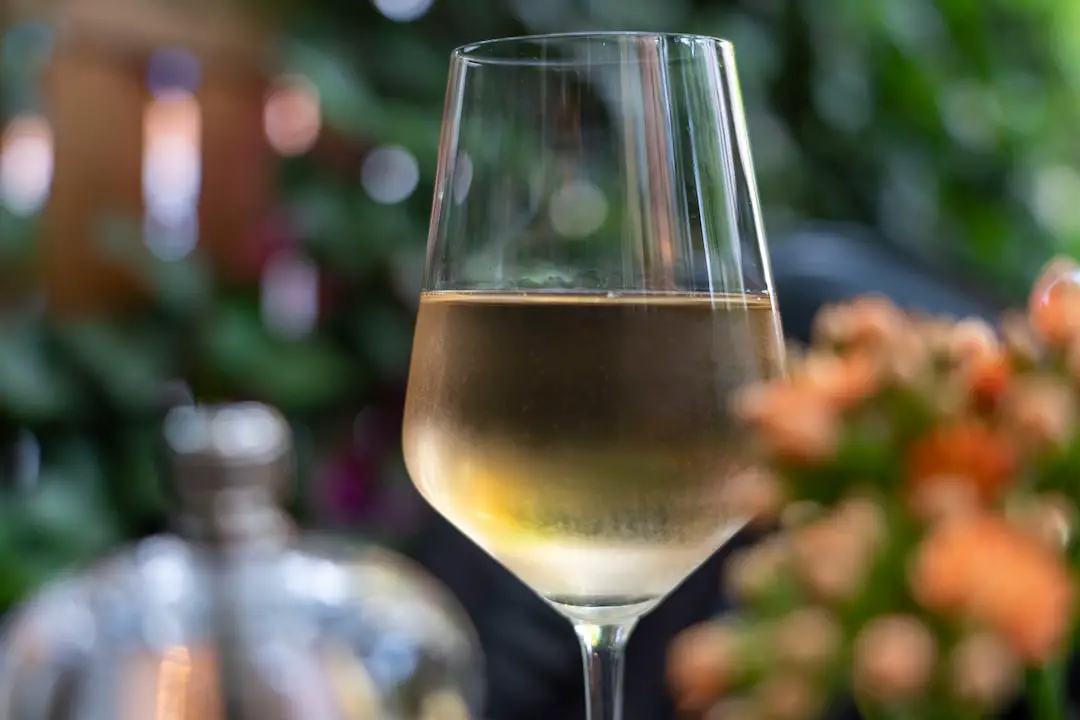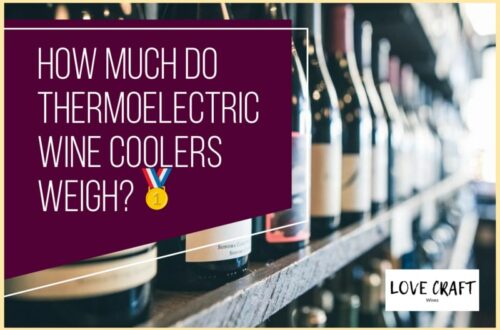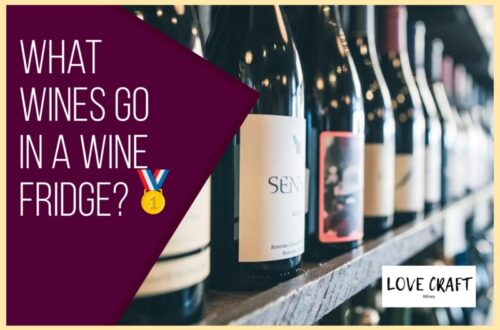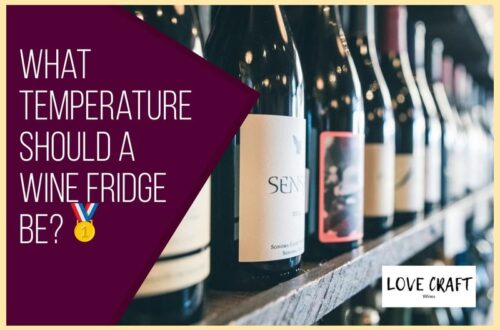Have you ever found yourself at a wine tasting event, surrounded by connoisseurs, and felt completely overwhelmed by the process? You’re not alone.
Wine tasting can seem like a complicated and intimidating process, but it’s actually quite simple once you know what to look for. Understanding the basics of wine tasting can help you develop a deeper appreciation for the complexities of wine and enhance your overall drinking experience.
The process of wine tasting involves using your senses to evaluate various aspects of the wine, including its appearance, aroma, taste, and texture. Each element can reveal important information about the wine’s quality, origin, and age.
By learning how to evaluate these components, you can gain a better understanding of what makes a good wine and how to identify your personal preferences. Whether you’re a seasoned wine enthusiast or just starting to explore the world of wine, understanding the art of wine tasting can enhance your appreciation and enjoyment of this timeless beverage.
Table of Contents
The Importance of Sight: Examining the Wine’s Color
The key to evaluating a vino’s quality lies in closely examining its hue and shade. Color variations of wine can indicate the grape variety, age, and even potential defects. A wine’s color also provides insight into its flavor profile and can help determine if the wine has undergone oxidation.
For example, a white wine that has turned brownish may have oxidized, resulting in a nutty, sherry-like flavor. When examining a wine’s color, hold the glass against a white background to better distinguish the hue and shade. Look for brightness, clarity, and intensity, as these characteristics can indicate the wine’s age and quality.
Younger wines tend to have brighter, more vibrant colors, while older wines may have a more subdued or brownish hue. By paying attention to color variations, you can gain insight into a wine’s potential flavor and aroma profile.
This leads us to the art of swirling: aiding aroma release.
The Art of Swirling: Aiding Aroma Release
As you pick up your wine glassware, one of the first steps in the wine tasting process is to swirl the wine around in the glass. This technique is important because it helps to release the wine’s aroma, allowing you to fully experience all the different scents in the wine.
Swirling the wine also introduces oxygen into the wine, which can help to open up the flavors and make it taste better. The swirling technique involves gently rotating the glass in a circular motion, allowing the wine to coat the sides of the glass and releasing the aromas.
It is important to note that there are different ways to swirl wine depending on the type of wine you are tasting. For example, lighter wines may require a more delicate swirling technique, while fuller-bodied wines may require a more aggressive swirl. Additionally, the size and shape of the wine glassware can also affect the swirling technique.
A larger, wider glass will allow for a more vigorous swirl, while a smaller, narrower glass will require a more delicate swirl. By mastering the art of swirling, you can fully appreciate the aroma and flavor of the wine, making the wine tasting experience even more enjoyable.
As you continue to swirl the wine, you will begin to notice the power of smell: identifying key scents. The aroma of the wine can reveal a lot about its age, type, and quality. By taking a moment to smell the wine, you can pick up on different scents such as fruit, floral, earthy, or even spicy notes.
This is an important step in the wine tasting process because it helps to prepare your palate for the flavors to come. By taking the time to swirl and smell the wine, you can fully immerse yourself in the wine tasting experience and appreciate all the nuances that the wine has to offer.
The Power of Smell: Identifying Key Scents
Smelling the different scents of a wine can transport your taste buds to a whole new world of flavors and aromas, allowing you to fully appreciate the complexity and depth of each sip. Identifying notes such as fruit, herbs, flowers, spices, wood, and earth is a crucial part of wine tasting, as they provide clues to the grape variety, the region where it was produced, the winemaking process, and the age of the wine.
To become an expert at recognizing aromas, you need to undergo aroma training, which involves smelling different scents and matching them with their corresponding descriptors. The more you practice, the more you’ll develop your olfactory memory and be able to detect subtler nuances in wines.
Some of the key scents you might encounter in a wine are:
- Fruity aromas: such as citrus, apple, pear, peach, apricot, cherry, raspberry, strawberry, blackberry, blueberry, plum, fig, raisin, or prune.
- Herbal aromas: such as mint, eucalyptus, sage, rosemary, thyme, or lavender.
- Floral aromas: such as rose, violet, jasmine, honeysuckle, or acacia.
- Spicy aromas: such as pepper, cinnamon, clove, nutmeg, or vanilla.
- Woody aromas: such as oak, cedar, or pine.
- Earthy aromas: such as mushroom, truffle, leather, or tobacco.
Once you’ve identified the scents of a wine, you can move on to the taste test: evaluating flavor and texture.
The Taste Test: Evaluating Flavor and Texture
To truly appreciate the complexity of a wine, you must delve into the taste test, evaluating the flavor and texture with each sip.
Texture analysis involves assessing the weight, viscosity, and mouthfeel of the wine. Is it light and crisp or heavy and syrupy? Does it coat your tongue or glide smoothly down your throat? These factors contribute to the overall enjoyment of the wine and can provide insight into its quality and age.
Flavor identification is a crucial aspect of wine tasting, as it helps you decipher the unique characteristics of each wine. Take note of the primary flavors, such as fruit, spice, or herbaceous notes, as well as any secondary or tertiary flavors that emerge as you swirl the wine in your glass.
The finish of the wine, or the aftertaste, can also reveal subtle nuances that you may have missed during the initial sip. By developing your palate and honing your flavor recognition skills, you can unlock a whole new level of appreciation for the art of wine tasting.
Developing Your Palate: Tips for Improving Your Wine Tasting Skills
You can elevate your wine experience by improving your palate with these simple tips.
First, practice blind tastings to challenge your palate and improve your ability to identify specific aromas and flavors. Blind tastings involve trying wines without knowing their origin or variety, and can be done alone or with a group. This exercise will help you focus solely on the wine’s characteristics and develop your palate through a process of elimination.
Another way to improve your palate is to experiment with different pairing suggestions. Wine and food have a symbiotic relationship, and pairing the right wine with the right dish can enhance the flavors of both.
Start by pairing wines with complementary flavors, such as a bold red wine with a hearty beef dish or a crisp white wine with a light seafood dish. As you become more confident, try contrasting flavors to create a more complex and interesting pairing.
By incorporating these tips into your wine tasting routine, you’ll be able to identify and appreciate the unique characteristics of each wine, and enjoy a more fulfilling wine experience.
Frequently Asked Questions
What is the proper way to hold a wine glass during a tasting?
To properly hold a wine glass during a tasting, start by holding the stem of the glass instead of the bowl. This prevents your hand from warming up the wine and affecting its temperature.
Speaking of temperature, it’s important to ensure that the wine is at the right temperature for tasting. Whites should be chilled, while reds should be at room temperature.
The shape of the wine glass also plays a role in the tasting experience. A wider bowl allows for more oxygenation, enhancing the aroma and flavor of the wine.
Keep these tips in mind to elevate your wine tasting experience and fully appreciate the nuances of each glass.
How does the environment affect the taste of wine during a tasting?
As you sit down for a wine tasting, take a moment to observe your surroundings.
Is the vineyard located near the coast, or high in the mountains? This can greatly affect the taste of the wine, as the soil and climate can have a significant impact on the grapes.
Additionally, pay attention to the shape of the wine glass. A wider bowl allows for more oxygen to reach the wine, opening up the aromas and flavors even further.
The environment can truly make or break a wine tasting experience, so take the time to appreciate all the nuances that go into each sip.
What foods should be avoided before a wine tasting to ensure an accurate evaluation of the wine?
Before attending a wine tasting, it’s important to be aware of certain food restrictions that can affect the sensory evaluation of the wine.
It’s recommended to avoid strong flavors, such as spicy or garlicky foods, as they can overpower the delicate flavors of the wine.
It’s also best to steer clear of foods that leave a lingering aftertaste, like coffee or chocolate.
To ensure an accurate evaluation of the wine’s flavor profiles, it’s important to cleanse your palate between each tasting. This can be done by sipping on water or sparkling water and nibbling on plain crackers or bread.
And if you’re attending a wine pairing event, it’s best to follow the suggested food pairings to enhance the overall tasting experience.
How does the age of a wine affect its taste during a tasting?
If you’re wondering how the age of a wine affects its taste during a tasting, then you should consider the wine storage conditions and grape varieties.
For example, red wines that are aged for years tend to have a smoother taste and more complex flavors due to the oxidation process. On the other hand, white wines that are aged for too long can lose their freshness and become overly oxidized.
Additionally, certain grape varieties are better suited for aging, such as Cabernet Sauvignon and Merlot. Understanding the age of a wine can provide insight into its unique characteristics and enhance your overall wine tasting experience.
Are there any health benefits to drinking wine in moderation that should be considered during a wine tasting?
Did you know that moderate wine consumption may have some health benefits for your heart? According to a study published in the American Journal of Clinical Nutrition, drinking red wine in moderation may improve cardiovascular health by increasing levels of ‘good’ cholesterol and reducing inflammation.
This is just one aspect of the science behind wine and health that may be worth considering during a wine tasting. While it’s important to enjoy wine responsibly and in moderation, it’s also interesting to note the potential positive effects it may have on your heart health.
So, next time you’re sipping on a glass of red, you can feel good knowing that you’re not only enjoying the taste, but also potentially benefiting your health.
Conclusion
Congratulations, you’ve completed your wine tasting journey!
You’ve learned the importance of examining the color of the wine, the art of swirling to release the aroma, the power of identifying key scents, and evaluating the flavor and texture. By practicing these techniques, you’ve developed your palate and improved your wine tasting skills.
But the journey doesn’t have to end here.
The world of wine is vast and there’s always more to discover. Keep exploring and experimenting with different varietals, regions, and styles. Challenge yourself to identify new scents and flavors, and continue to develop your palate.
Who knows, you may even discover a new favorite wine along the way.
So go ahead, grab a glass and cheers to your new-found wine tasting skills!





